
Walvis Bay: Namibia's Coastal Gem
Discover Walvis Bay, Namibia's coastal gem, where the desert meets the ocean and adventure awaits with stunning lagoons, rich marine life, and thrilling desert activities.
Walvis Bay is a captivating coastal town in Namibia, known for its stunning lagoon and rich marine life. Nestled between the Namib Desert and the Atlantic Ocean, this city offers a unique blend of natural beauty and adventure. The lagoon is a haven for bird watchers, with flamingos, pelicans, and other migratory birds creating a picturesque scene. The calm waters are perfect for kayaking, and boat tours offer a chance to spot dolphins and seals. The town itself is a charming mix of old and new, with colonial-era buildings standing alongside modern developments. The waterfront promenade is lined with restaurants and cafes, offering fresh seafood and breathtaking views of the bay. For those interested in history, the Walvis Bay Museum provides fascinating insights into the town's past and its role in Namibia's development. Adventurers will find plenty to do in and around Walvis Bay. The nearby dunes of the Namib Desert offer opportunities for sandboarding and 4x4 excursions, while the surrounding area is ideal for bird watching and nature walks. The salt pans and bird sanctuary are a must-visit for nature enthusiasts. Whether you're looking to relax by the water, explore the desert, or indulge in local cuisine, Walvis Bay has something for everyone.
Local tips in Walvis Bay
- Plan your visit between October and April for the best bird watching opportunities.
- Book a boat tour early in the morning for a chance to see dolphins and seals.
- Try the local seafood at the waterfront restaurants for a fresh and delicious meal.
- Pack layers as the weather can change quickly, especially in the desert.
- Don't miss a visit to the nearby Namib Desert for sandboarding and 4x4 excursions.
Walvis Bay: Namibia's Coastal Gem
Walvis Bay is a captivating coastal town in Namibia, known for its stunning lagoon and rich marine life. Nestled between the Namib Desert and the Atlantic Ocean, this city offers a unique blend of natural beauty and adventure. The lagoon is a haven for bird watchers, with flamingos, pelicans, and other migratory birds creating a picturesque scene. The calm waters are perfect for kayaking, and boat tours offer a chance to spot dolphins and seals. The town itself is a charming mix of old and new, with colonial-era buildings standing alongside modern developments. The waterfront promenade is lined with restaurants and cafes, offering fresh seafood and breathtaking views of the bay. For those interested in history, the Walvis Bay Museum provides fascinating insights into the town's past and its role in Namibia's development. Adventurers will find plenty to do in and around Walvis Bay. The nearby dunes of the Namib Desert offer opportunities for sandboarding and 4x4 excursions, while the surrounding area is ideal for bird watching and nature walks. The salt pans and bird sanctuary are a must-visit for nature enthusiasts. Whether you're looking to relax by the water, explore the desert, or indulge in local cuisine, Walvis Bay has something for everyone.
When is the best time to go to Walvis Bay?
Iconic landmarks you can’t miss
Dunes Mall
Explore the vibrant Dunes Mall in Walvis Bay, where shopping, dining, and entertainment come together for an unforgettable experience.
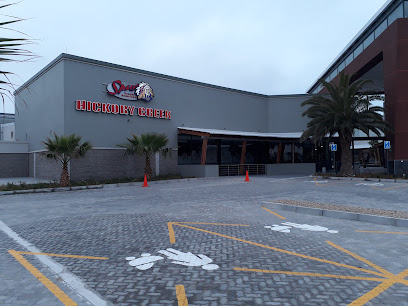
Anchors Waterfront Restaurant
Discover the culinary treasures of Anchors Waterfront Restaurant in Walvis Bay, where seafood and Portuguese flavors meet stunning ocean views.
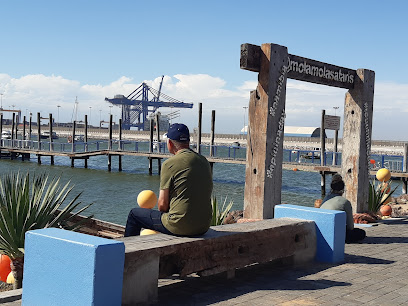
Dune 7
Explore the breathtaking beauty of Dune 7 in Walvis Bay, Namibia - a towering sand dune offering stunning views and thrilling adventures.
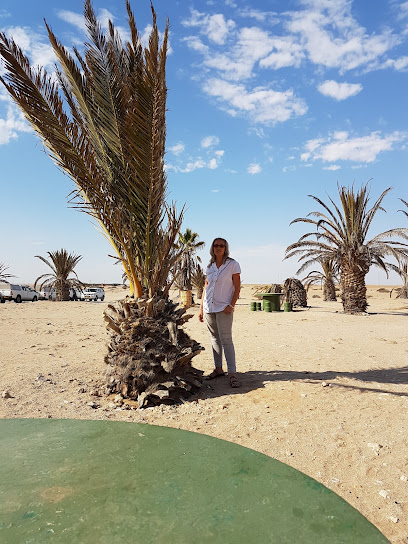
Dockside Seafood & Grill
Experience the finest seafood at Dockside Seafood & Grill, nestled on Walvis Bay's waterfront with stunning ocean views.
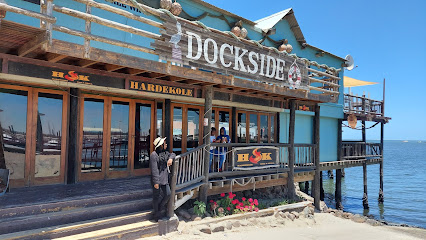
Food Lover's Market Walvis Bay
Discover the vibrant flavors and fresh produce at Food Lover's Market Walvis Bay, a culinary gem for tourists and locals alike.
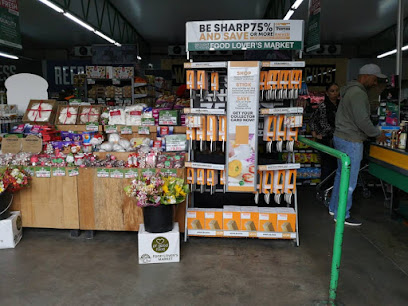
Vlooi's Nest
Discover the culinary delights of Walvis Bay at Vlooi's Nest, where fresh local ingredients and warm hospitality come together for an unforgettable dining experience.
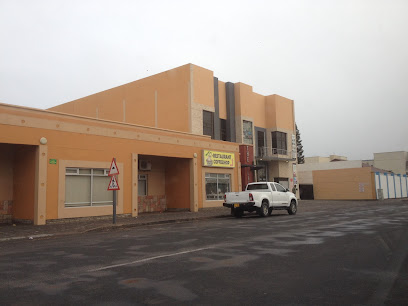
Sandwich Harbour 4x4 - Booking and Check-in Office
Discover the breathtaking beauty of Sandwich Harbour, where the Namib Desert meets the Atlantic Ocean, perfect for adventure and nature enthusiasts.
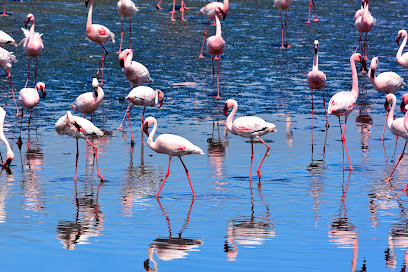
Learning Nation Namibia
Explore the enchanting world of Learning Nation Namibia, the ultimate toy store in Walvis Bay, where fun and learning meet.
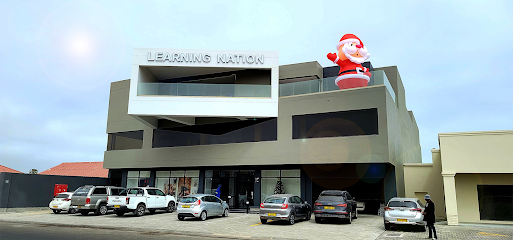
Mola Mola Safaris
Explore the breathtaking marine life and stunning landscapes of Walvis Bay with Mola Mola Safaris - adventure awaits in Namibia's coastal paradise.
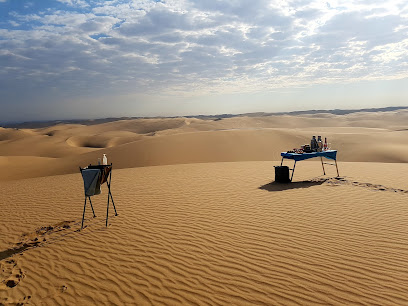
Walvis Bay Museum
Explore Walvis Bay Museum: A Cultural Jewel Unveiling the Rich Maritime Heritage and Indigenous Stories of Namibia's Coastal Town.
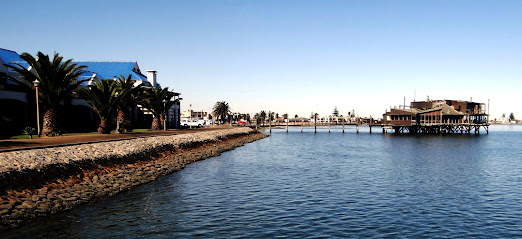
Lagoon Loge
Stay at Lagoon Loge in Walvis Bay for a cozy and convenient lodging experience, ideally located near Namibia's breathtaking coastal attractions.

Chocolate City Guesthouse
Discover Chocolate City Guesthouse in Walvis Bay, a charming retreat offering comfort and local culture near stunning coastal landscapes.
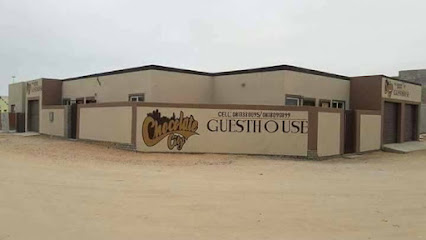
Catamaran Charters - Booking and Check-in Office
Experience the thrill of sailing on the stunning Atlantic Ocean with Catamaran Charters in Walvis Bay, a must for every ocean lover.
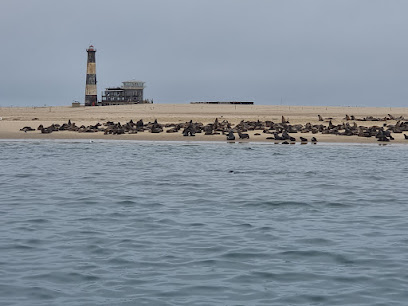
Pelican Point Kayaking
Discover the serene beauty of Walvis Bay through Pelican Point Kayaking, where adventure meets the breathtaking Atlantic coastline.
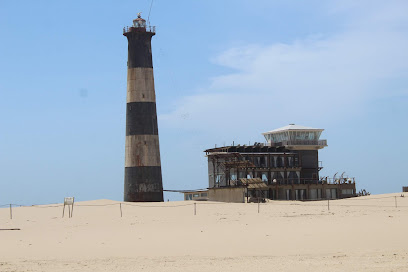
CRAZY MAMAS
Discover Crazy Mamas in Walvis Bay, where local ingredients meet international flavors for an unforgettable dining experience.

Unmissable attractions to see
Swakopmund Museum
Explore Namibia's heritage at Swakopmund Museum, where culture, history, and nature come together in a unique coastal experience.
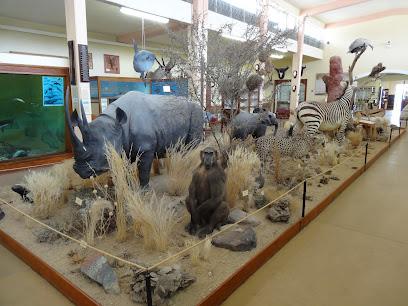
Kristall Galerie
Explore the stunning world of crystals and gemstones at Kristall Galerie, a unique museum in Swakopmund showcasing nature's beauty and geological wonders.
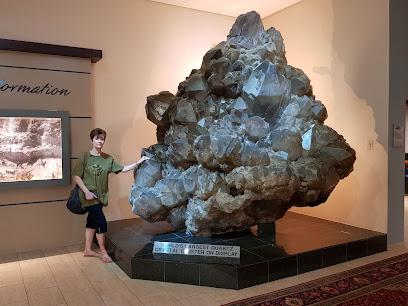
Dune 7
Explore Dune 7, Namibia's tallest sand dune, for breathtaking views, thrilling sandboarding, and unforgettable moments in the heart of nature.
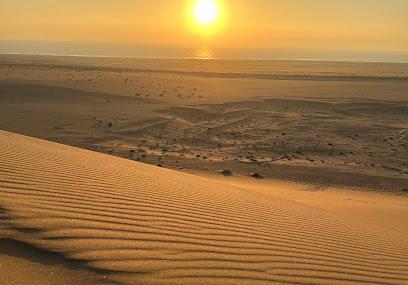
Pelican Point Kayaking
Explore the stunning waters of Walvis Bay with Pelican Point Kayaking, where adventure meets the beauty of nature in Namibia.
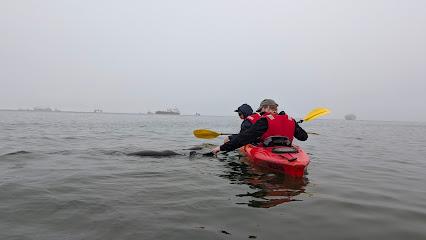
Swakopmund Fat Bike Tours
Experience the thrill of cycling through the stunning landscapes of Swakopmund with guided fat bike tours and rentals in Namibia.
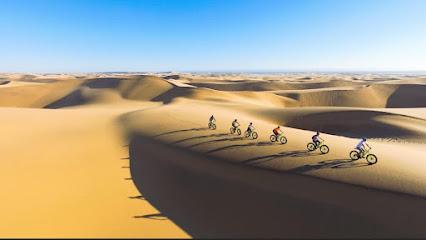
Catamaran Dolphin Cruises
Explore the Atlantic's wonders with Catamaran Dolphin Cruises in Walvis Bay, where unforgettable marine adventures await.
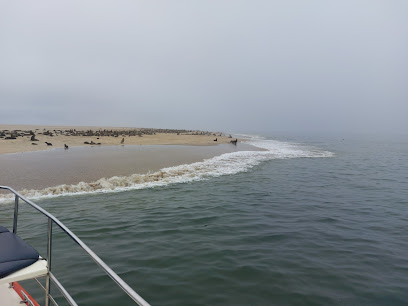
Red Dune Safaris Namibia
Discover the breathtaking landscapes of Namibia with Red Dune Safaris, your ultimate adventure in the heart of the Namib Desert.
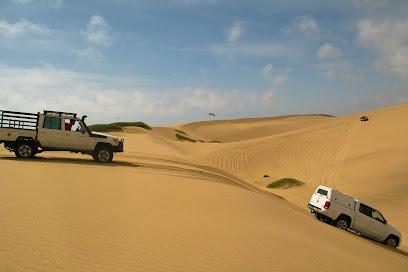
Pink Lake
Experience the breathtaking beauty of Pink Lake, a vibrant natural wonder in Namibia, perfect for relaxation and wildlife observation.

Jetty Pier - End of Pier
Experience breathtaking ocean views and vibrant local culture at Jetty Pier, the heart of Swakopmund's coastal charm.
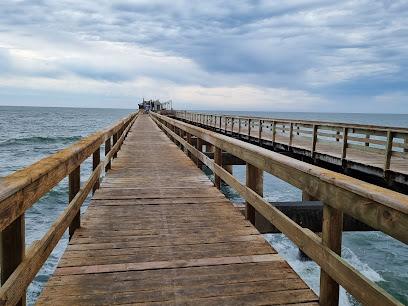
Flamingo Lagoon
Explore the serene Flamingo Lagoon in Walvis Bay, Namibia, a nature preserve featuring stunning flamingo populations and breathtaking coastal views.
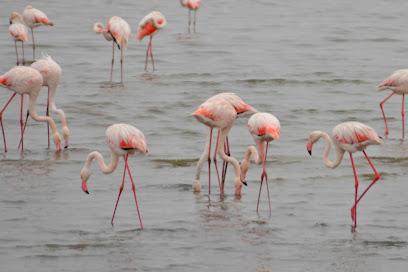
Kuiseb Delta Adventures
Discover the breathtaking beauty of the Namib Desert with Kuiseb Delta Adventures, where thrilling tours meet stunning landscapes and rich wildlife.
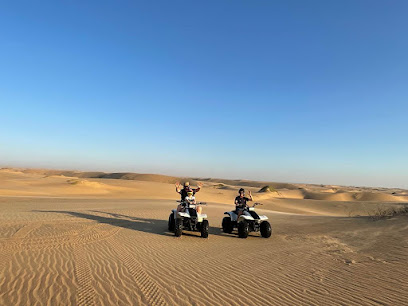
Camel Farm
Discover the Camel Farm in Swakopmund: Experience thrilling camel rides through breathtaking Namibian landscapes and immerse yourself in local culture.
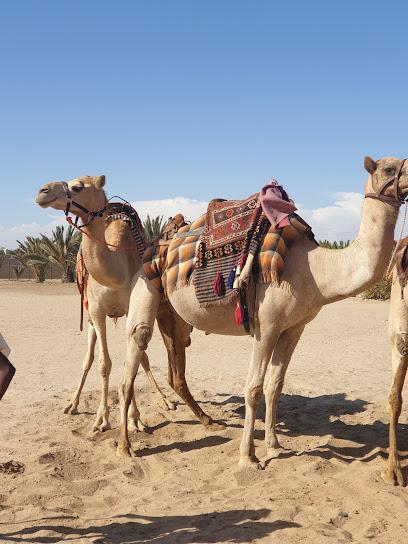
Namibia Dolphin and Seal Catamaran Cruises
Discover the breathtaking marine life of Namibia with unforgettable dolphin and seal cruises in Walvis Bay's stunning coastal waters.
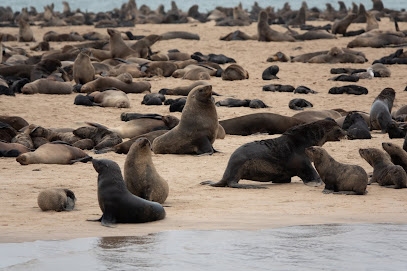
Walvis Bay Waterfront
Experience the stunning landscapes, fresh seafood, and vibrant culture at Walvis Bay Waterfront, a must-visit destination on Namibia's coastline.
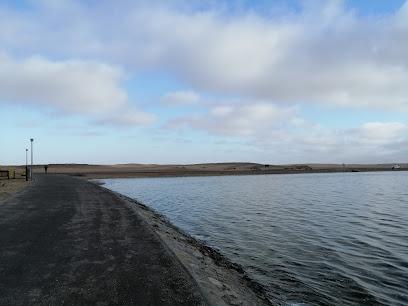
Walvis Bay Wind Beggars
Explore the natural beauty of Walvis Bay with thrilling canoe and kayak tours at Walvis Bay Wind Beggars, a top tourist attraction in Namibia.
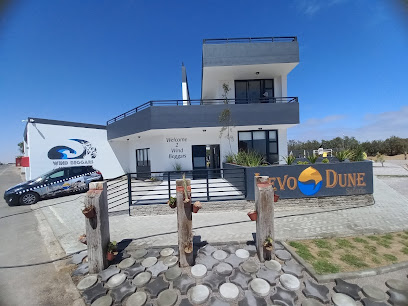
Essential places to dine
Anchors Waterfront Restaurant
Discover delicious seafood and Portuguese cuisine at Anchors Waterfront Restaurant in Walvis Bay, Namibia—where every meal comes with breathtaking ocean views.
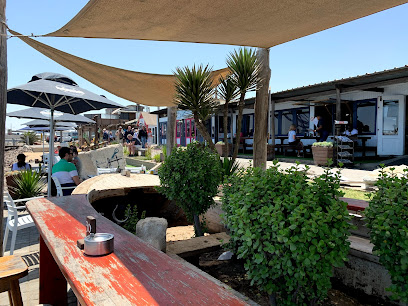
The Raft Restaurant
Dine at The Raft Restaurant in Walvis Bay for exquisite seafood and breathtaking views on the Skeleton Coast.
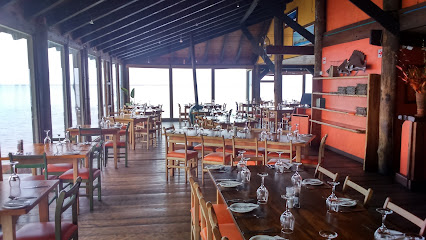
KFC Walvis Bay
Savor delicious fast food at KFC Walvis Bay while enjoying Namibia's coastal charm and local attractions.
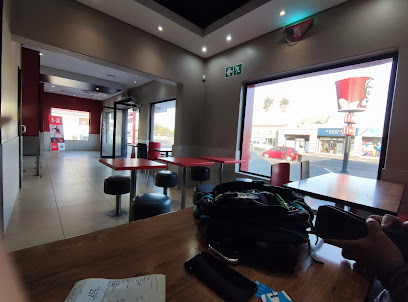
Rojo Pub and Restaurant at The Walvis Bay Yacht Club
Savor delightful meals at Rojo Pub and Restaurant in Walvis Bay Yacht Club - where culinary excellence meets stunning waterfront views.
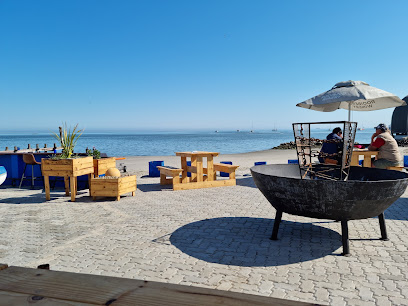
Godenfang Restaurant Walvis Bay
Experience authentic Namibian cuisine at Godenfang Restaurant in Walvis Bay - where every dish tells a story.
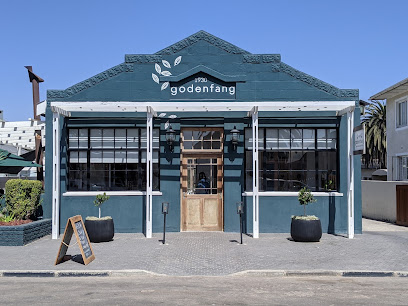
Dockside Seafood & Grill
Savor fresh seafood with stunning waterfront views at Dockside Seafood & Grill in Walvis Bay.
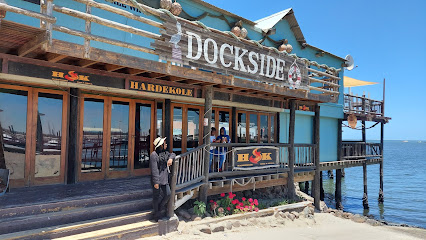
Hickory Creek Spur
Experience delightful steak and authentic African cuisine at Hickory Creek Spur in Walvis Bay's Dunes Mall - perfect for families!
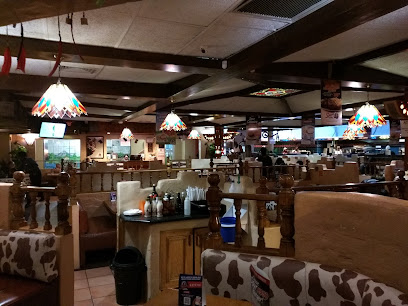
Vlooi's Nest
Experience the flavors of Namibia at Vlooi's Nest in Walvis Bay – where delicious cuisine meets stunning coastal views.
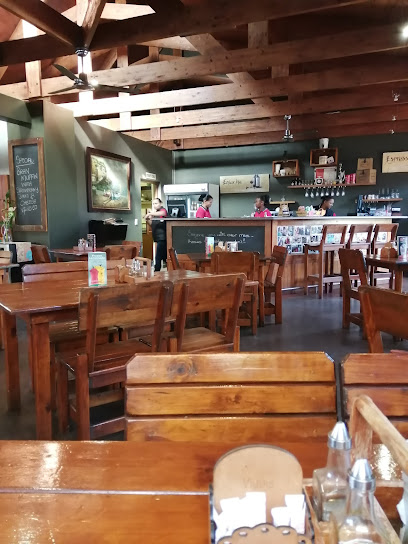
O'Heilie's Steakhouse & Steve's Take Away
Experience exquisite steaks and local flavors at O'Heilie's Steakhouse & Steve's Take Away in scenic Walvis Bay.
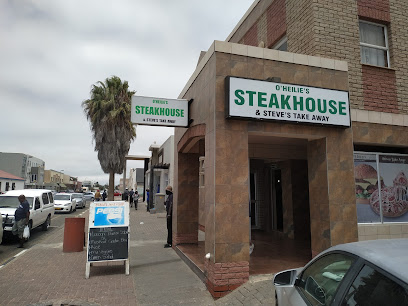
Dune 7 Restaurant and Bar
Experience authentic Namibian cuisine with stunning dune views at Dune 7 Restaurant and Bar – where every meal tells a story.
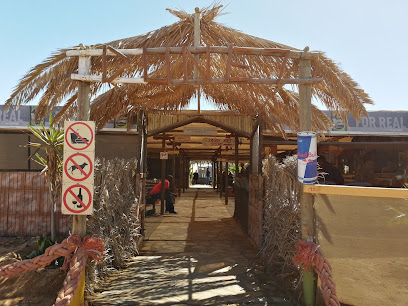
IRIS Boutique Hotel & Restaurant
Discover the perfect blend of comfort and culinary excellence at IRIS Boutique Hotel & Restaurant in Walvis Bay.

Blue Whale Boutique Hotel /Restaurant/Lounge
Experience luxury and fine dining at Blue Whale Boutique Hotel & Restaurant in Walvis Bay – your perfect coastal escape.
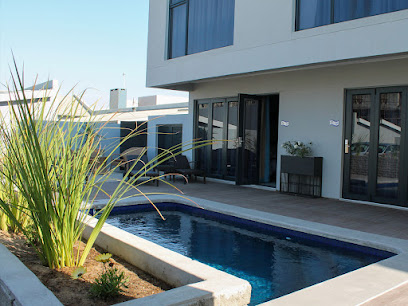
Artisan Bread, Bakery & Coffee Shop
Discover artisanal delights at this cozy bakery and coffee shop in Walvis Bay – perfect for indulging in fresh bread and aromatic brews.
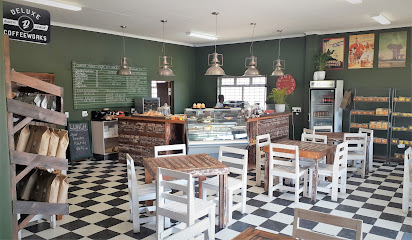
CRAZY MAMAS
Discover CRAZY MAMAS in Walvis Bay - where vibrant atmosphere meets delicious cuisine for an unforgettable dining experience.
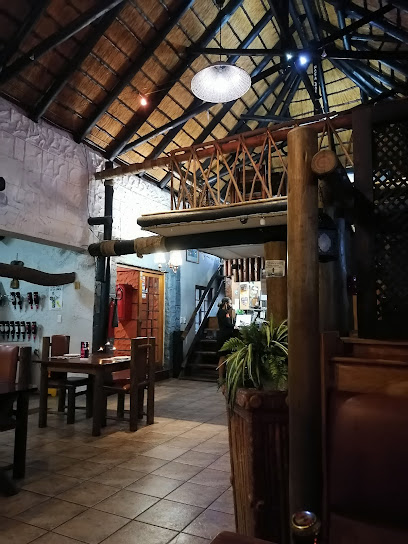
Bush Cafe & Family Restaurant
Discover the taste of Namibia at Bush Cafe & Family Restaurant in Walvis Bay – where culinary delights meet warm hospitality.

Markets, malls and hidden boutiques
Dunes Mall
Discover a unique shopping experience at Dunes Mall in Walvis Bay, where retail, dining, and entertainment come together in a vibrant atmosphere.
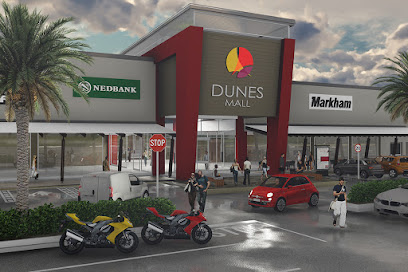
Shop 4 Value
Discover the vibrant shopping experience at Shop 4 Value in Walvis Bay, offering local goods and essentials in a lively supermarket setting.
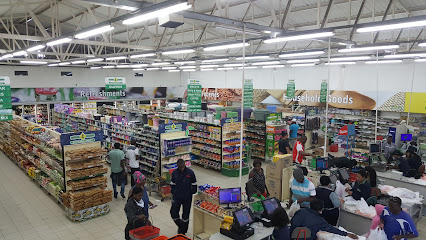
Your Woermann, Walvis Bay Main
Explore the vibrant shopping scene at Your Woermann in Walvis Bay, where local flavors and quality goods meet in a welcoming atmosphere.
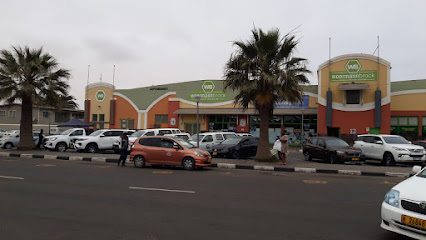
Game Walvis Bay Namibia
Discover the ultimate shopping experience at Game Walvis Bay, featuring everything from electronics to sporting goods in one convenient location.
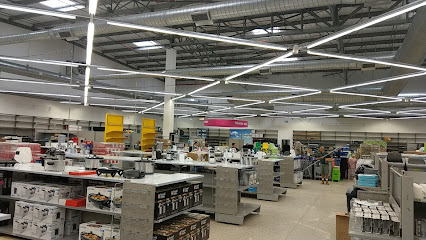
Spot-On Shopping Centre
Discover the Spot-On Shopping Centre in Walvis Bay, a vibrant hub for groceries, local delicacies, and a taste of Namibian culture.
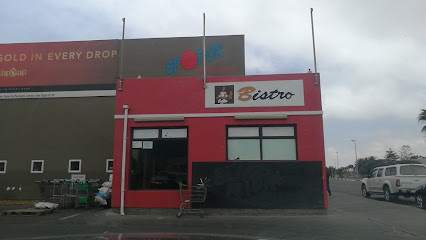
Your Woermann, Shoreline, Walvis Bay
Explore the vibrant flavors of Namibia at Your Woermann, the premier supermarket in Walvis Bay, offering fresh produce and local delicacies.
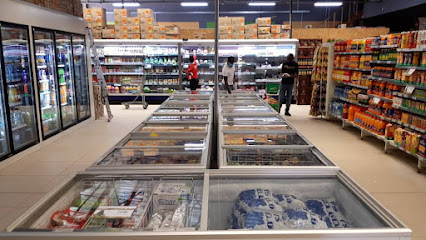
The Corner Shop
Explore local flavors and essentials at The Corner Shop, a must-visit supermarket in Walvis Bay, Namibia.
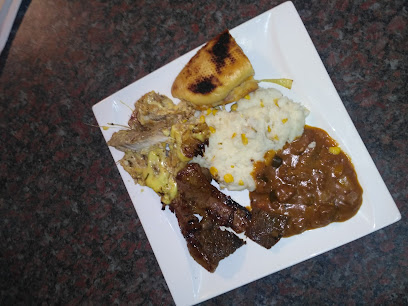
Shop 4
Explore Shop 4 in Walvis Bay – Your go-to shopping destination for local crafts, fashion, and delightful dining experiences.
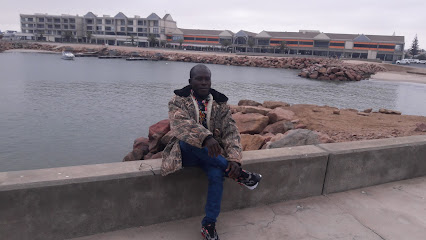
Cash Crusaders Walvis Bay
Explore unique second-hand treasures at Cash Crusaders Walvis Bay, your go-to destination for antiques, furniture, and gaming gear.
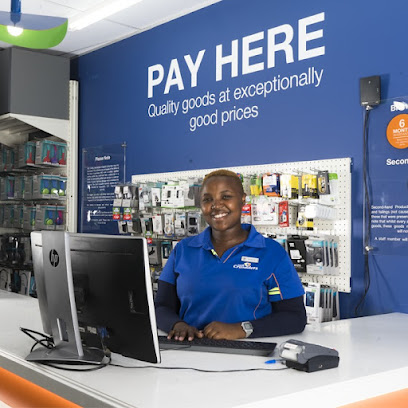
Choppies Walvis Bay
Explore the vibrant flavors of Namibia at Choppies Walvis Bay, your local grocery store for fresh produce and local delicacies.

Ellikie ndeshiika
Explore the vibrant fashion scene at Ellikie Ndeshiika in Walvis Bay, where local designs meet contemporary style in a unique shopping experience.

The Crazy Store Walvis Bay
Discover unique gifts, toys, and home goods at The Crazy Store Walvis Bay, your ultimate shopping destination for affordable treasures.

Anchors Mini Shop
Explore Anchors Mini Shop in Walvis Bay for unique local crafts and souvenirs that celebrate the beauty of Namibian culture.
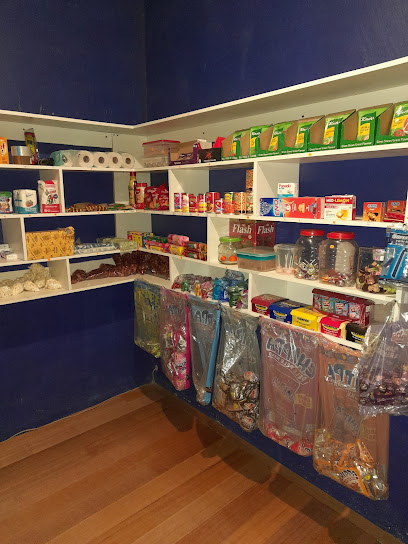
style clothing cc
Discover unique fashion at Style Clothing CC in Walvis Bay, where local style meets personal service in a charming boutique atmosphere.
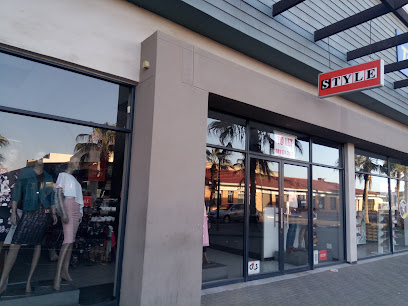
Bedding Boutique Walvis Bay
Explore Bedding Boutique Walvis Bay for luxurious bedding and stylish furniture, reflecting local culture and comfort.
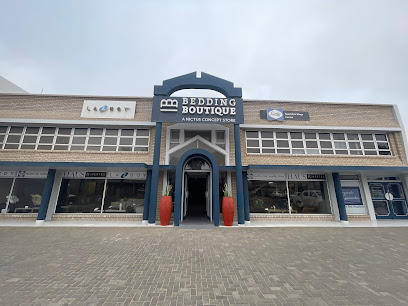
Essential bars & hidden hideouts
Rojo Pub and Restaurant at The Walvis Bay Yacht Club
Experience the lively atmosphere and local flavors at Rojo Pub and Restaurant, the perfect dining spot in Walvis Bay's Yacht Club.
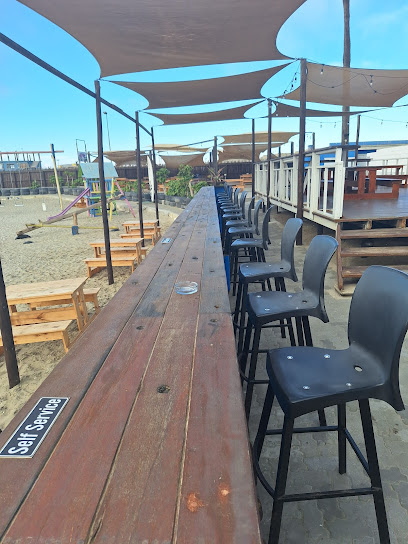
CRAZY MAMAS
Discover the vibrant flavors of Walvis Bay at Crazy Mamas, where culinary delights and local hospitality await every visitor.
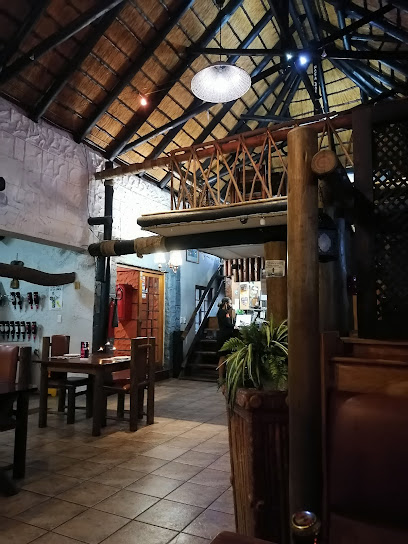
Gordon's Lounge
Experience the vibrant atmosphere of Gordon's Lounge in Walvis Bay - a perfect bar to relax and enjoy local culture.
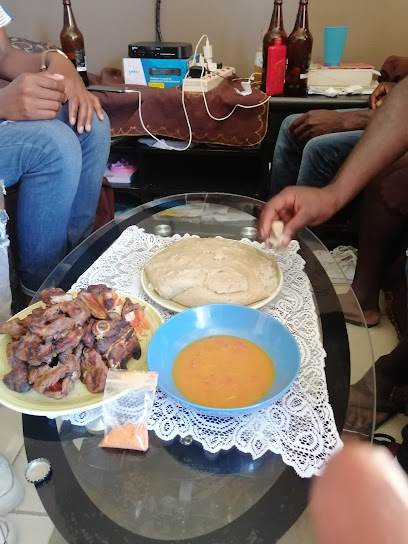
Groen Bar
Groen Bar in Walvis Bay offers a laid-back ambiance and affordable drinks, perfect for tourists seeking local flavor and a vibrant social scene.
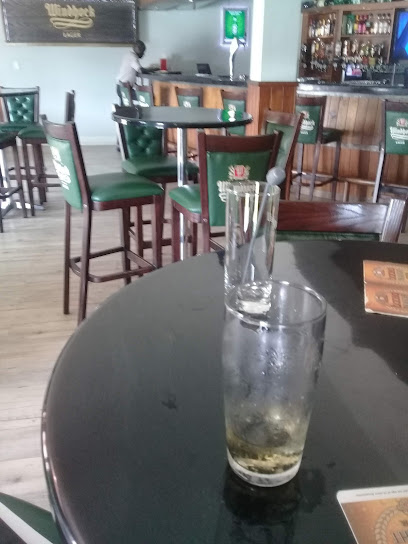
Styles Lounge
Discover the vibrant flavors of Walvis Bay at Styles Lounge, a premier grill and bar offering succulent dishes and a lively atmosphere.
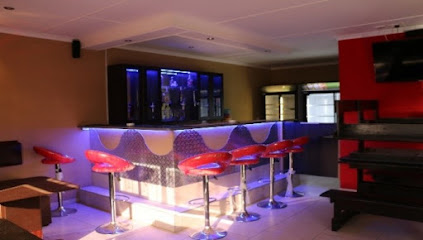
Ekunde shebeen
Discover the lively atmosphere and local flavors at Ekunde Shebeen, a vibrant bar in Walvis Bay, Namibia, perfect for cultural immersion.
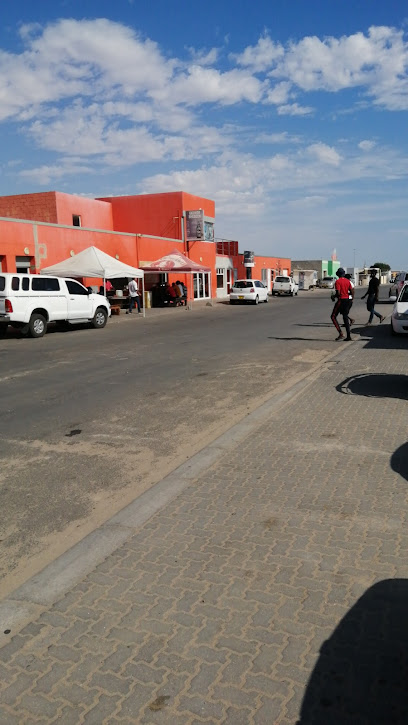
Champs Pub.
Experience the vibrant nightlife and local culture at Champs Pub, a welcoming bar in the heart of Walvis Bay, Namibia.

Phillip's Beer Garden Bar
Experience the vibrant atmosphere and affordable drinks at Phillip's Beer Garden Bar in Walvis Bay, the perfect destination for relaxation and socializing.
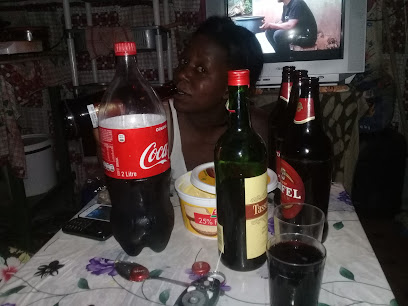
Dolphin Bar No 2
Discover Dolphin Bar No 2 in Walvis Bay for a vibrant atmosphere, stunning views, and a taste of local culture.
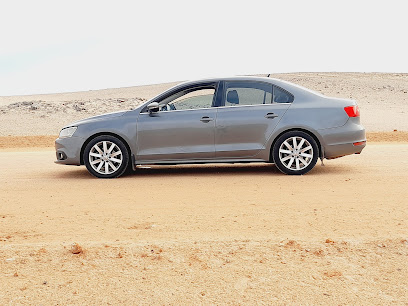
Housemate Bar
Discover Housemate Bar in Walvis Bay: where cold drinks, friendly vibes, and local culture meet for an unforgettable experience.
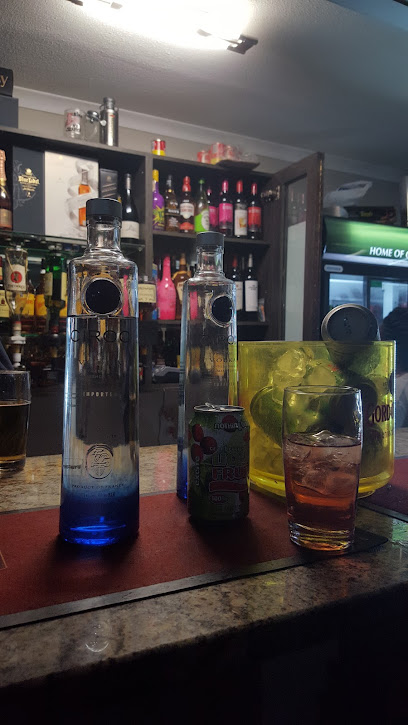
Paparazzi's
Discover the vibrant atmosphere and local culture at Paparazzi's, the premier bar in Walvis Bay for tourists seeking a lively experience.

Enda Nawa Shiveli Bar
Experience the vibrant nightlife at Enda Nawa Shiveli Bar in Walvis Bay, where locals and tourists come together for great drinks and unforgettable moments.

Desert Inn
Discover the vibrant atmosphere and local flavors at Desert Inn, a must-visit bar in Walvis Bay for every traveler.

Small Tic Tac
Experience the vibrant atmosphere of Small Tic Tac, a must-visit bar in Walvis Bay, offering refreshing drinks and lively entertainment.
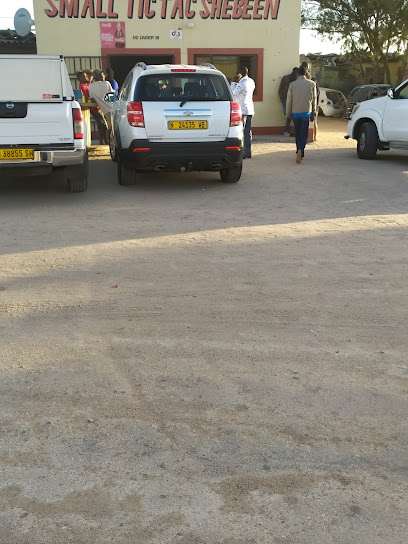
PEACE OF MIND
Experience the vibrant atmosphere and local flavors at Peace of Mind, Walvis Bay's favorite bar for relaxation and socializing.

Local Phrases
-
- HelloHallo
[ha-lo] - GoodbyeTotsiens
[toh-tsee-ens] - YesJa
[yah] - NoNee
[nee] - Please/You're welcomeAsseblief
[ah-seh-bleef] - Thank youDankie
[dahn-kee] - Excuse me/SorryVerskoon my
[fehr-skoon may] - How are you?Hoe gaan dit met jou?
[hoo gahn dit met yoh] - Fine. And you?Goed. En jy?
[khoot. en yey] - Do you speak English?Praat jy Engels?
[praht yey eng-els] - I don't understandEk verstaan nie
[ehk fehr-stahn nee]
- HelloHallo
-
- I'd like to see the menu, pleaseEk wil asseblief die spyskaart sien
[ehk vil ah-seh-bleef dee spays-kart seen] - I don't eat meatEk eet nie vleis nie
[ehk ate nee flays nee] - Cheers!Gesondheid!
[ge-sohn-dhayt] - I would like to pay, pleaseEk wil asseblief betaal
[ehk vil ah-seh-bleef buh-tahl]
- I'd like to see the menu, pleaseEk wil asseblief die spyskaart sien
-
- Help!Hulp!
[huulp] - Go away!Gaan weg!
[kahn vehkh] - Call the Police!Bel die Polisie!
[behl dee poh-lee-see] - Call a doctor!Bel 'n dokter!
[behl un dohk-tehr] - I'm lostEk is verlore
[ehk is fehr-loh-ruh] - I'm illEk is siek
[ehk is see-uhk]
- Help!Hulp!
-
- I'd like to buy...Ek wil koop...
[ehk vil kohp] - I'm just lookingEk kyk net
[ehk kayk neht] - How much is it?Hoeveel kos dit?
[hoo-veyl kohs deet] - That's too expensiveDit is te duur
[deet is teh doohr] - Can you lower the price?Kan jy die prys verlaag?
[kahn yey dee preys fuh-rahkh]
- I'd like to buy...Ek wil koop...
-
- What time is it?Hoe laat is dit?
[hoo laaht is deet] - It's one o'clockDit is een uur
[deet is ayn oohr] - Half past (10)Half tien
[hahlf teeyen] - MorningOggend
[oh-khent] - AfternoonMiddag
[mi-daahkh] - EveningAand
[ahnt] - YesterdayGister
[khees-tehr] - TodayVandag
[fahn-dahkh] - TomorrowMôre
[moh-ruh] - 1Een
[ayn] - 2Twee
[tveh] - 3Drie
[dree] - 4Vier
[feer] - 5Vyf
[fayf] - 6Ses
[sehs] - 7Sewe
[seh-weh] - 8Agt
[ahkht] - 9Nege
[neh-ghuh] - 10Tien
[teeyen]
- What time is it?Hoe laat is dit?
-
- Where's a/the...?Waar is 'n/die...?
[vahr is un/dee] - What's the address?Wat is die adres?
[vaht is dee ah-drehs] - Can you show me (on the map)?Kan jy my wys (op die kaart)?
[kahn yey may vis (op dee khart)] - When's the next (bus)?Wanneer is die volgende (bus)?
[vahn-ehr is dee fohl-guhn-deh (buhs)] - A ticket (to ....)'n Kaartjie (na ....)
[un kahrt-yuh (nah)]
- Where's a/the...?Waar is 'n/die...?
History of Walvis Bay
-
Long before European explorers set foot on the African continent, the area now known as Walvis Bay was inhabited by indigenous groups such as the Topnaar Nama people. These communities thrived on the rich marine resources offered by the Atlantic Ocean, developing unique cultural practices and a deep connection to the land and sea.
-
In 1487, the Portuguese navigator Bartolomeu Dias became one of the first Europeans to explore the area. He named the bay 'Golfo de Santa Maria da Conceição' but did not establish a settlement. This marked the beginning of European interest in the region, which would later lead to colonial competition.
-
During the 17th century, Dutch explorers and traders frequented the waters of Walvis Bay. They recognized the bay's strategic importance as a natural harbor, but like the Portuguese, they did not establish permanent settlements. Their presence, however, contributed to the growing European interest in the area.
-
In 1878, the British Empire formally annexed Walvis Bay, recognizing its value as a deep-water harbor. The annexation was partly motivated by the need to establish a strategic point along the route to India and to secure a foothold in Southern Africa amid growing colonial rivalries.
-
While the British held control of Walvis Bay, the surrounding area of Namibia, then known as German South-West Africa, was colonized by Germany in 1884. This created a unique situation where Walvis Bay was a British enclave within German territory, leading to administrative complexities and tensions.
-
After World War I, South Africa took over the administration of German South-West Africa, including Walvis Bay. The Treaty of Versailles granted South Africa a mandate over the territory, and Walvis Bay became an important port and administrative center under South African rule.
-
Namibia gained independence from South Africa in 1990, but Walvis Bay remained under South African control. It wasn't until 1994 that Walvis Bay was officially integrated into the newly independent Namibia, marking a significant milestone in the country's post-colonial history.
-
Today, Walvis Bay is a bustling port city and economic hub for Namibia. The development of the Walvis Bay Corridor, a network of transport routes connecting the port to neighboring countries, has transformed the city into a key logistics and trade center in Southern Africa.
Walvis Bay Essentials
-
Walvis Bay is accessible via Walvis Bay International Airport (WVB), which has direct flights from several major cities in Southern Africa. Alternatively, you can fly into Hosea Kutako International Airport (WDH) in Windhoek and take a connecting flight or drive approximately 400 kilometers to Walvis Bay. The drive from Windhoek to Walvis Bay takes about 4-5 hours. Bus services and car rentals are also available for those who prefer ground transportation.
-
Within Walvis Bay, taxis are the most common form of transportation and are relatively inexpensive. Car rentals are available at the airport and in the city, which is a convenient option if you plan on exploring the surrounding areas, such as the Namib Desert or Swakopmund. Public buses are limited, so taxis and rental cars are the most reliable options for getting around.
-
The official currency in Namibia is the Namibian Dollar (NAD), which is pegged to the South African Rand (ZAR). Both currencies are accepted in Walvis Bay. Credit and debit cards are widely accepted in hotels, restaurants, and shops. ATMs are available throughout the city for cash withdrawals. It's advisable to carry some cash for smaller establishments and markets that may not accept cards.
-
Walvis Bay is generally safe for tourists, but like any travel destination, it's important to take standard precautions. Avoid walking alone at night, especially in poorly lit areas. The Lagoon and Narraville neighborhoods are generally safe, but it's advisable to be cautious in areas like Kuisebmond, where crime rates are higher. Always be aware of your surroundings and keep an eye on your belongings in crowded places.
-
In case of an emergency, dial 112 for immediate assistance. The nearest hospital is the Walvis Bay State Hospital, which provides medical services. Private clinics are also available for non-emergency medical issues. It's recommended to have travel insurance that covers medical emergencies. For minor health concerns, pharmacies are available throughout the city where you can purchase over-the-counter medications.
-
Fashion: Do dress casually but modestly. Light clothing is recommended due to the warm climate, but avoid overly revealing outfits. Religion: Do respect local customs and traditions, especially when visiting religious sites. Public Transport: Do use registered taxis and agree on the fare beforehand. Don't use unmarked or unofficial taxis. Greetings: Do greet people with a friendly 'hello' or 'good day.' A handshake is also common. Eating & Drinking: Do try local seafood delicacies and traditional dishes. Don't refuse hospitality, as it is considered impolite.
-
To experience Walvis Bay like a local, visit the Walvis Bay Waterfront for a mix of dining, shopping, and leisure activities. Take a walk along the Esplanade and enjoy views of the lagoon, where you can see flamingos and other bird species. Engage with locals at the open-air markets and try fresh seafood. Join a guided tour for activities like dolphin cruises, dune boarding, and quad biking in the Namib Desert. Don't miss a visit to the nearby town of Swakopmund for a blend of colonial architecture and adventure activities.
Trending Landmark in Walvis Bay
-
Dunes Mall
-
Anchors Waterfront Restaurant
-
Dune 7
-
Dockside Seafood & Grill
-
Food Lover's Market Walvis Bay
-
Vlooi's Nest
-
Sandwich Harbour 4x4 - Booking and Check-in Office
-
Learning Nation Namibia
-
Mola Mola Safaris
-
Walvis Bay Museum
-
Lagoon Loge
-
Chocolate City Guesthouse
-
Catamaran Charters - Booking and Check-in Office
-
Pelican Point Kayaking
-
CRAZY MAMAS
Nearby Cities to Walvis Bay
-
Things To Do in Swakopmund
-
Things To Do in Usakos
-
Things To Do in Karibib
-
Things To Do in Omaruru
-
Things To Do in Windhoek
-
Things To Do in Okahandja
-
Things To Do in Otjiwarongo
-
Things To Do in Outjo
-
Things To Do in Mariental
-
Things To Do in Lüderitz
-
Things To Do in Etosha Village
-
Things To Do in Tsumeb
-
Things To Do in Keetmanshoop
-
Things To Do in Oshakati
-
Things To Do in Ongwediva










